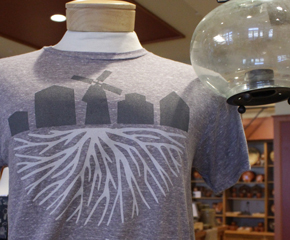Patent Model of Edmondson's Circular Calculating Machine, 1883
Add to SetSummary
Mechanical calculators used gears, cogs, levers, and rotating drums to solve mathematical problems indirectly. While Edmondson's Circular Calculator was rugged and reliable, its "stepped drum" system required people to slide plates and levers, making it difficult to master and time-consuming to operate. By the late 19th century, improved adding machines became popular, helping to reduce the common errors of human calculation.
Mechanical calculators used gears, cogs, levers, and rotating drums to solve mathematical problems indirectly. While Edmondson's Circular Calculator was rugged and reliable, its "stepped drum" system required people to slide plates and levers, making it difficult to master and time-consuming to operate. By the late 19th century, improved adding machines became popular, helping to reduce the common errors of human calculation.
Artifact
Model (Patent)
Date Made
1883
Creators
Blakey, Emmott & Company, Ltd.
Place of Creation
United Kingdom, England, Halifax
Creator Notes
Joseph Edmondson was awarded three British patents for his circular calculating machine in 1883; it was manufactured by Blakey, Emmott and Co., Ltd.
Location
Not on exhibit to the public.
Object ID
31.1217.110
Credit
From the Collections of The Henry Ford. Gift of Edison Laboratories.
Material
Wood (Plant Material)
Metal
Brass (Alloy)
Ceramic (Material)
Felt (Textile)
Paper (Fiber product)
Printed
Dimensions
Height: 5.5 in
Width: 17 in
Length: 19.25 in
Inscriptions
MADE FOR THE PATENTEE J. EDMONDSON. HALIFAX, ENGLAND, BY BLAKEY, EMMOTT & CO. LTD. [brass plaque] EDMONDSON'S CIRCULAR CALCULATING MACHINE / NOTA BENE / (operating instructions) [inside case]





